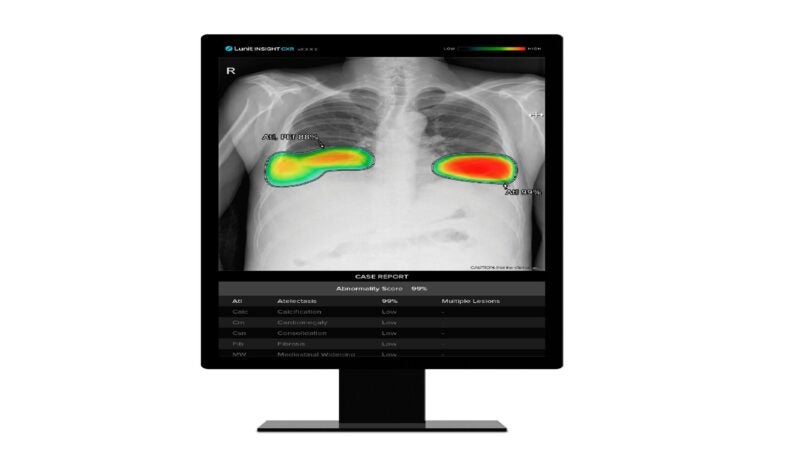
Lunit’s artificial intelligence (AI)-powered chest X-ray analysis solution Lunit INSIGHT CXR can significantly improve the reading performance of radiologists, as per the findings of a study.
The study was held by Seoul National University Hospital from December 2015 to February 2021. Its results were published recently in the Radiology journal.
A cohort of 30 doctors were part of the study. This included 20 board-certified radiologists and 10 radiology residents.
Lunit, a cancer diagnostics solutions provider, said that 120 chest radiographs were collected retrospectively. Of these, half were from patients with lung cancer and the other 60 had no abnormalities.
In the first session, the 30 readers were split into two groups and examined independently 120 chest X-rays. The images were then reinterpreted by each group in the following session using either a high-accuracy or low-accuracy AI model.
Lunit INSIGHT CXR was used as the high-accuracy AI model in the study. In comparison, only 10% of the data available to Lunit INSIGHT CXR was used to train the low-accuracy model.
When compared to the low-accuracy AI model, Lunit INSIGHT CXR had an area under the receiver operating characteristic curve (AUROC) of 0.88 as opposed to 0.77 for the low-accuracy model.
According to the findings, the model significantly increased the AUROC from 0.77 to 0.82.
The AUROC stayed at 0.75 for the radiologists in the other group, who did not see any gain in performance while using the low-accuracy AI model.
Additionally, the team that used the high-accuracy AI model showed increased receptivity to AI recommendations.
The radiologists accepted 67% of recommendations by AI that went against the results of the original reading compared to 59% acceptance by the group using the low-accuracy AI model.
Lunit CEO Brandon Suh said: “The study backs that irrespective of radiologists’ individual characteristics, the utilisation of high-performance AI significantly enhances diagnostic accuracy and fosters a greater acceptance of AI within medical practices.
“At Lunit, we are committed to developing AI-powered solutions that not only improve patient outcomes but also augment the expertise of healthcare professionals.”
These results highlight the importance of the performance of the AI model when radiologists use AI as a second reader, the diagnostic solutions provider said.





